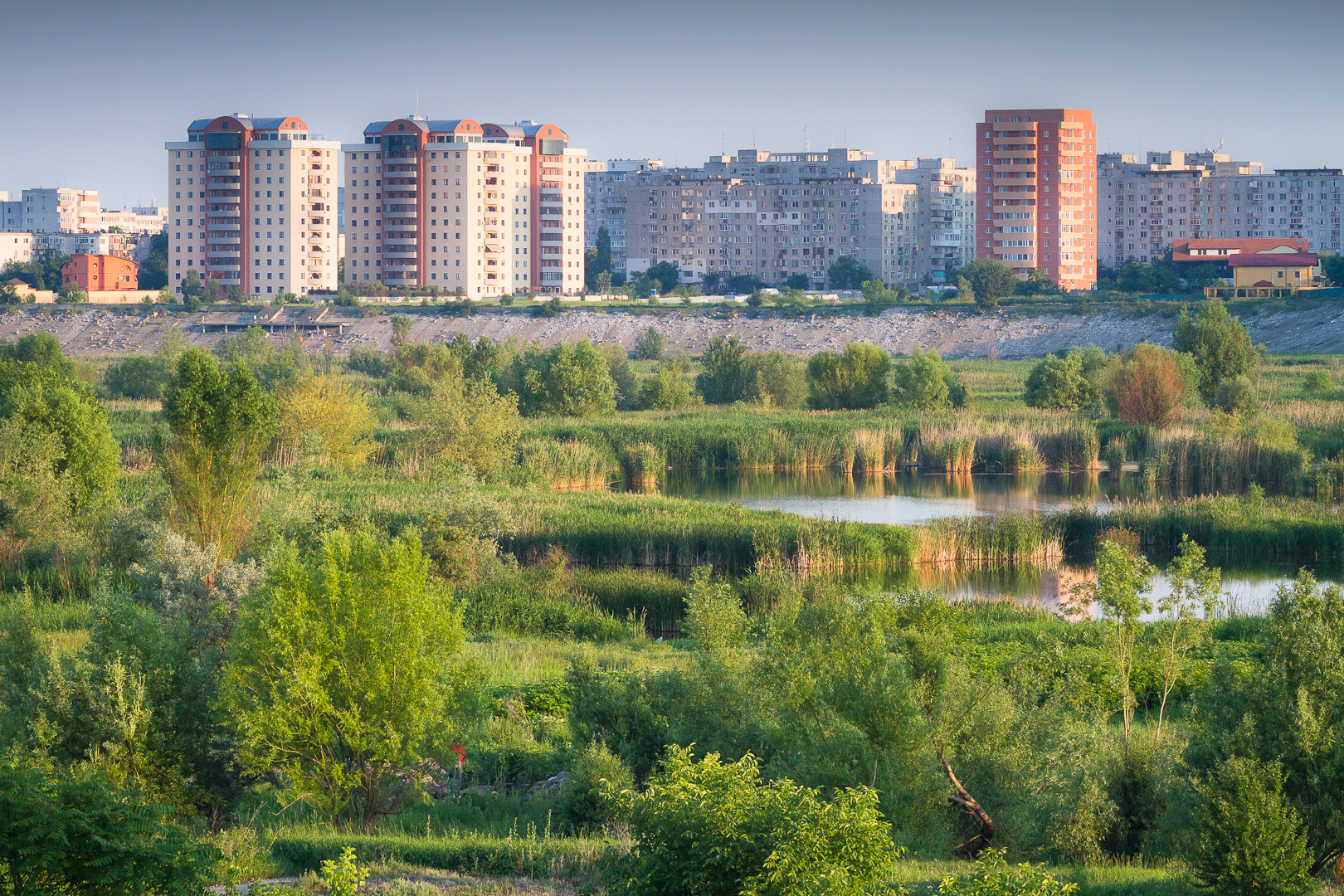|
Berceni, Bucharest
Berceni is a district (''cartier'' in Romanian) of southern Bucharest. Location Geographically, it has a trapezoidal shape, bordered by Olteniței Road to the north and Turnu Măgurele Street to the south. Built during the 1960s, it is a typical Communist-era working class district, lacking any major green spaces or cultural attractions. It has a population of roughly 110,000. Etymology It is believed that the name comes from the hussars of Miklós Bercsényi, who were first mentioned after the suppression of the Hungarian Kuruc War led by Francis II Rákóczi (at beginning of the 18th century). They settled in the neighborhood of Bucharest. Another theory claims that the name comes from an archaic Romanian word for tax collector. History Before the 1960s, Berceni was situated outside of Bucharest, in a very sparsely populated area where only a few rural properties were located, with the nearest landmarks being the long-gone Văcărești Monastery, and starting from the latt ... [...More Info...] [...Related Items...] OR: [Wikipedia] [Google] [Baidu] |
Bucharest Quarter Berceni
Bucharest ( , ; ro, București ) is the capital and largest city of Romania, as well as its cultural, industrial, and financial centre. It is located in the southeast of the country, on the banks of the Dâmbovița River, less than north of the Danube River and the Bulgarian border. Bucharest was first mentioned in documents in 1459. The city became the capital of Romania in 1862 and is the centre of Romanian media, culture, and art. Its architecture is a mix of historical (mostly Eclectic, but also Neoclassical and Art Nouveau), interbellum (Bauhaus, Art Deco and Romanian Revival architecture), socialist era, and modern. In the period between the two World Wars, the city's elegant architecture and the sophistication of its elite earned Bucharest the nickname of 'Paris of the East' ( ro, Parisul Estului) or 'Little Paris' ( ro, Micul Paris). Although buildings and districts in the historic city centre were heavily damaged or destroyed by war, earthquakes, and even Nicolae Ce ... [...More Info...] [...Related Items...] OR: [Wikipedia] [Google] [Baidu] |
Bellu Cemetery
Șerban Vodă Cemetery (commonly known as Bellu Cemetery) is the largest and most famous cemetery in Bucharest, Romania. It is located on a plot of land donated to the local administration by Baron Barbu Bellu. It has been in use since 1858. The cemetery covers 54 acres and it is one of the most authentic cultural attractions in Bucharest. Hours The cemetery is open every day from 8:30 AM to 8 PM. On public holidays the visiting hours may differ. Notable interments * A * Elena Alistar, physician and politician * Theodor Aman, painter and illustrator * Ana Aslan, biologist and physician * B * Aurel Babeș, scientist and physician * George Bacovia, writer * Ioan Bălan, bishop * Leopoldina Bălănuță, actress * Eugen Barbu, journalist, pamphleteer, polemicist, publicist, novelist, scenarist, and politician * Tita Bărbulescu, singer * Ion Barbu, poet and mathematician * Marga Barbu, actress * Radu Beligan, actor * Barbu Bellu, baron, jurist, and politician * Carol ... [...More Info...] [...Related Items...] OR: [Wikipedia] [Google] [Baidu] |
Romanian Revolution
The Romanian Revolution ( ro, Revoluția Română), also known as the Christmas Revolution ( ro, Revoluția de Crăciun), was a period of violent civil unrest in Romania during December 1989 as a part of the Revolutions of 1989 that occurred in several countries around the world. The Romanian Revolution started in the city of Timișoara and soon spread throughout the country, ultimately culminating in the drumhead trial and execution of longtime Romanian Communist Party (PCR) General Secretary Nicolae Ceaușescu and his wife Elena Ceaușescu, Elena, and the end of 42 years of Communist rule in Romania. It was also the last removal of a Marxist–Leninist government in a Warsaw Pact country during the events of 1989, and the only one that violently overthrew a country's leadership and executed its leader; according to estimates, over one thousand people died and thousands more were injured. Following World War II, Romania was placed under the Soviet Empire, Soviet sphere of i ... [...More Info...] [...Related Items...] OR: [Wikipedia] [Google] [Baidu] |
Bucharest Metro
The Bucharest Metro ( ro, Metroul din București) is an underground rapid transit system that serves Bucharest, the capital of Romania. It first opened for service on 16 November 1979. The network is run by Metrorex. One of two parts of the larger Bucharest public transport network, Metrorex has an average of approximately 720,000 passenger trips per weekday (as of 2018), compared to the 1,180,000 daily riders on Bucharest's STB transit system. In total, the Metrorex system is long and has 64 stations. History The first proposals for a metro system in Bucharest were made in the early part of the 20th century, by the Romanian engineers Dimitrie Leonida and Elie Radu. The earliest plans for a Bucharest Metro were drafted in the late 1930s, alongside the general plans for urban modernization of the city. The outbreak of World War II, followed by periods of political tensions culminating with the installation of communism, put an end to the plans. By 1970, the public transp ... [...More Info...] [...Related Items...] OR: [Wikipedia] [Google] [Baidu] |
Bucharest Metro Line M2
M2 () is one of the five lines of metro of the Bucharest Metro. The M2 Line runs from Pipera to Berceni, thus linking the north to the south of the city. The line is the busiest on the system, passing through a multitude of neighbourhoods, and also the only line to serve the centre of the city. History The line was built during the 1980s when the industrial development in Romania was in full swing. A north-south metro line was crucial, seeing as other methods of public transport were very crowded and cars were very rare. As such the construction of this line was prioritised over others such as the M4, which was only completed recently. The building of the M2 line led to the removal in 1987 of the trolleybus lines linking Berceni to Băneasa; those lines, put in place in 1962, were made obsolete by the opening of the metro, according to the city planners at the time. The M2 line was opened in two steps: # Berceni – Piața Unirii on 24 January 1986; # Piata Unirii – Pipera ... [...More Info...] [...Related Items...] OR: [Wikipedia] [Google] [Baidu] |
Giurgiului
Giurgiului () is a neighborhood in the southern part of the Romanian capital Bucharest, in Sector 5, near Berceni and Ferentari. Like Berceni, Giurgiului has plenty of 10-storey blocks of flats that were built under Communist rule, starting with 1959–1964. The estimated population is between 30,000 and 40,000. Before the Communists started their massive building programme, Giurgiului was a farming village. After 1948 the village was added to the city area. A few years later in the south of the neighborhood a pipe factory was built along with a power plant, CET Berceni. Giurgiului has a cemetery, which includes a memorial to an estimated 300 Jewish refugees who had sailed from Romania aboard the motor schooner and were killed when a Soviet submarine sank the ship in August 1944. History As mentioned before, the area was at first placed on the road towards the town of Giurgiu, the namesake of the neighborhood. The area was made up of small farms, agricultural fields and hou ... [...More Info...] [...Related Items...] OR: [Wikipedia] [Google] [Baidu] |
Dobruja
Dobruja or Dobrudja (; bg, Добруджа, Dobrudzha or ''Dobrudža''; ro, Dobrogea, or ; tr, Dobruca) is a historical region in the Balkans that has been divided since the 19th century between the territories of Bulgaria and Romania. It is situated between the lower Danube River and the Black Sea, and includes the Danube Delta, Romanian coast, and the northernmost part of the Bulgarian Black Sea Coast, Bulgarian coast. The territory of Dobruja is made up of Northern Dobruja, which is part of Romania, and Southern Dobruja, which is part of Bulgaria. The territory of the Romanian region Dobrogea is organised as the counties of Constanța County, Constanța and Tulcea County, Tulcea, with a combined area of and a population of slightly less than 900,000. Its main cities are Constanța, Tulcea, Medgidia and Mangalia. Dobrogea is represented by dolphins in the coat of arms of Romania. The Bulgarian region Dobrudzha is divided among the administrative regions of Dobrich Pro ... [...More Info...] [...Related Items...] OR: [Wikipedia] [Google] [Baidu] |
Lipovans
, flag = Flag of the Lipovans.png , flag_caption = Flag of the Lipovans , image = Evstafiev-lipovane-slava-cherkeza.jpg , caption = Lipovans during a ceremony in front of the Lipovan church in the Romanian village of Slava Cercheză in 2004 , population = , region1 = , pop1 = 23,487 , ref1 = , region2 = , pop2 = , ref2 = , region3 = , pop3 = , ref3 = , region4 = , pop4 = 700–800 , ref4 = , religions = Old Believers (Eastern Orthodox Christianity) , languages = Russian, Romanian, Ukrainian, Bulgarian , related = Russians , footnotes = The Lipovans or Lippovans (russian: Липовáне; ro, Lipoveni; uk, Липовани; bg, Липованци) are ethnic Russian Old Believers living in Romania, Ukraine, Moldova and Bulgaria who settled in the Principality of Moldavia, in the east of the Principality of Wallachia (Muntenia), and in the regions of Dobruja and Budjak during the 17th and 18th centuries. According to the 2011 Romanian ... [...More Info...] [...Related Items...] OR: [Wikipedia] [Google] [Baidu] |
Scînteia
''Scînteia'' (Romanian for "The Spark") was the name of two newspapers edited by Communist groups at different intervals in Romanian history. The title is a homage to the Russian language paper ''Iskra''. It was known as ''Scânteia'' until the 1953 spelling reform, which replaced the letter ''Â'' with the phonologically identical ''Î'' in all cases. History 1919 in Odessa The first paper of that name was edited by Romanian revolutionaries in Bolshevist Russia, appearing throughout 1919 in the city of Odessa. In Romania (1931–1989) ''Scânteia'' reemerged as the official voice of the Communist Party of Romania on August 15, 1931, being published clandestinely in Bucharest until 1940, when the hostility between Romania and the Soviet Union grew to a level where a crackdown on communist propaganda became imminent. In the wake of King Michael's Coup of 23 August 1944 and Romania's withdrawing from the Axis and joining the Allies, ''Scânteia'' was yet again being publ ... [...More Info...] [...Related Items...] OR: [Wikipedia] [Google] [Baidu] |
Interwar Period
In the history of the 20th century, the interwar period lasted from 11 November 1918 to 1 September 1939 (20 years, 9 months, 21 days), the end of the World War I, First World War to the beginning of the World War II, Second World War. The interwar period was relatively short, yet featured many significant social, political, and economic changes throughout the world. Petroleum-based energy production and associated mechanisation led to the prosperous Roaring Twenties, a time of both social mobility and economic mobility for the middle class. Automobiles, electric lighting, radio, and more became common among populations in the developed world. The indulgences of the era subsequently were followed by the Great Depression, an unprecedented worldwide economic downturn that severely damaged many of the world's largest economies. Politically, the era coincided with the rise of communism, starting in Russia with the October Revolution and Russian Civil War, at the end of World War I ... [...More Info...] [...Related Items...] OR: [Wikipedia] [Google] [Baidu] |
Văcărești, Bucharest
Văcărești () is a neighbourhood in south-eastern Bucharest, located near Dâmbovița River and the Văcărești Lake. Nearby neighbourhoods include Vitan, Olteniței, and Berceni. Originally a village, it was incorporated into Bucharest as it expanded. Its name is related to the Wallachian aristocratic Văcărescu family, with an etymology leading back to the Romanian , "cow-herder," and the suffix '' -ești''. The Monastery and quarter The Văcărești Monastery, built by Nicholas Mavrocordatos in 1716, was located on the Văcărești hill, nowadays near Piața Sudului. It was demolished in 1984 during the regime of Nicolae Ceaușescu to make room for a Palace of Justice that was never built. It was the largest 18th-century monastery in Southeastern Europe and it had a church in the style of Curtea de Argeș Cathedral. It was also designed to be used as a fortress, and was seized in May 1771 by the Imperial Russian army, under commander Nikolai Vasilyeich Repnin, in t ... [...More Info...] [...Related Items...] OR: [Wikipedia] [Google] [Baidu] |
Romanian Language
Romanian (obsolete spellings: Rumanian or Roumanian; autonym: ''limba română'' , or ''românește'', ) is the official and main language of Romania and the Republic of Moldova. As a minority language it is spoken by stable communities in the countries surrounding Romania (Bulgaria, Hungary, Serbia, and Ukraine), and by the large Romanian diaspora. In total, it is spoken by 28–29 million people as an L1+ L2, of whom 23–24 millions are native speakers. In Europe, Romanian is rated as a medium level language, occupying the tenth position among thirty-seven official languages. Romanian is part of the Eastern Romance sub-branch of Romance languages, a linguistic group that evolved from several dialects of Vulgar Latin which separated from the Western Romance languages in the course of the period from the 5th to the 8th centuries. To distinguish it within the Eastern Romance languages, in comparative linguistics it is called ''Daco-Romanian'' as opposed to its closest r ... [...More Info...] [...Related Items...] OR: [Wikipedia] [Google] [Baidu] |







